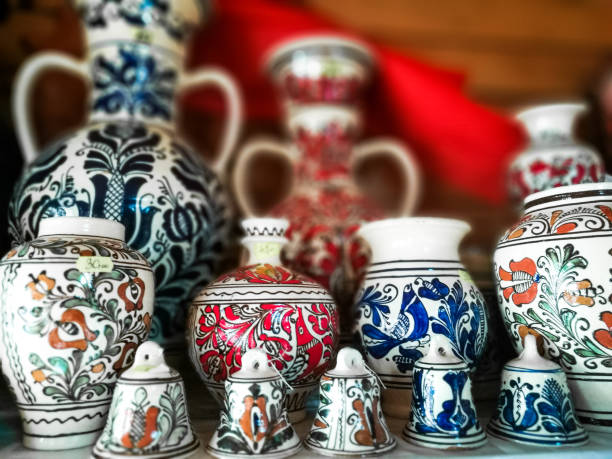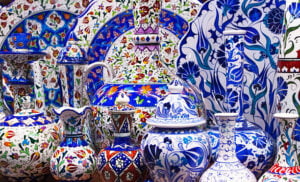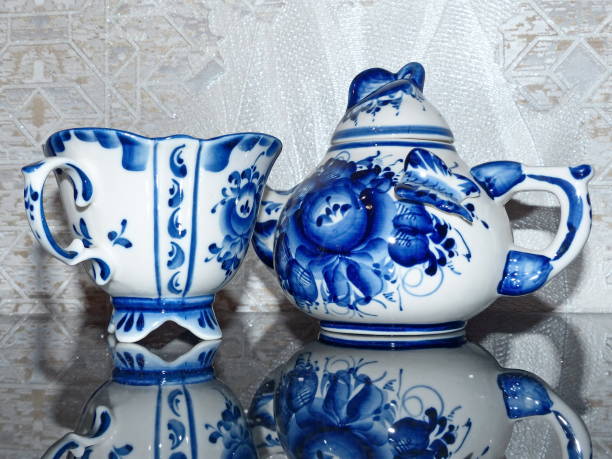
Traditional Jars in Modern Chinese Decor
The ginger jars have gone from practical to iconic emblems of refinement and cultural history in interior design. Formerly used to store spices and preserve foods, these vessels now lead contemporary Chinese design, merging traditional and modern styles.

A rich ceramic heritage underpins the Chinese ginger jar. These simple, practical jars were made during the Qin Dynasty. Later, especially during the Ming and Qing Dynasties, they became ornamental. The complex decorations and glazes on the jars, notably the iconic blue and white motifs, showcased Chinese artists’ skill.
These jars are standard in houses worldwide, not just in Chinese households. Ginger jars have numerous functions in modern Chinese decor. They express culture and history and decorate. The timeless appeal and versatility of these traditional jars are seen in modern dwellings.
Designers and homeowners use ginger jars to enhance beauty and history. Usually arranged in pairs, these jars help balance a room’s aesthetic. Their curving shapes and bright patterns contradict modern design’s clean lines and muted color palettes. The contrast combines both styles’ charm and provides a dynamic, coherent look.
Ginger jars’ flexibility goes beyond their appearance. They can be adapted for many home uses. A huge ginger jar can be turned into a beautiful vase with fresh flowers or branches to add a natural touch to the design. Smaller jars can hold household things or be art.
Ginger jars are valuable in modern design because of their cultural relevance. Each jar has a tale based on its culture. Many Chinese families use these jars as heirlooms to pass on stories and connect the past and present.
Modern d cor can use ginger jars without a Chinese aesthetic. These versatile jars work with rustic to ultra-modern settings. Collectors and interior designers love them because they convey a feeling of worldliness and appreciation for different crafts and cultures.
Ginger jars exhibit a global trend of incorporating traditional features into modern designs. This tendency shows a growing desire to connect with heritage and appreciate historical work. It also challenges the premise that modern rooms must only use modern products and ideas, allowing cross-time creative expression.
Interestingly, younger generations are back into ginger jars. Due to their history and versatility, these historic objects inspire new homeowners and designers to create their designs. Ginger jars are frequently featured in social media and home decor magazines, showing how they can improve modern interiors. These depictions highlight the jars’ beauty and invite reinterpretation of traditional Chinese art.
Ginger jars are popular in modern Chinese decor because they show how traditional materials can be repurposed. They are interior design jewels because they can adapt to numerous contexts and uses while preserving their cultural importance. Ginger jars, icons of creative expertise and artistic legacy, inspire and influence modern home aesthetics, fusing the past and present to celebrate eternal beauty and utility.
Adding Chinese Ginger Jars to Western Home Decor
The appeal of Eastern aesthetics in Western interiors has long been celebrated, and ginger jars stand out among the many traditional items that can enrich a home’s ambiance with their deep historical roots and stunning beauty. These Chinese pottery jars have become icons of luxury and cultural exchange in home decor worldwide. Integrating traditional Chinese components into Western dwellings requires weaving a design tapestry that respects both roots and creates something distinct and harmonious.
Ginger jars were initially used to keep spices and herbs in ancient China, but they have since become cherished decorative pieces in the finest households. These jars typically have elaborate blue and white patterns, although others portray landscapes, flower designs, or historical events. Due to their sizeable circular body, domed top, and tight aperture, they are readily identifiable and popular among interior designers.
Consider the space’s aesthetic and narrative when incorporating ginger jars into Western decor. The jars can be a central point or complementary design element. For instance, a vast ginger jar on a mantelpiece or console table can be a magnificent centerpiece that generates conversation. These jars’ blue and white palette matches neutral to solid color schemes, making them easy to incorporate into current decor.
Western homes can combine styles beyond arranging them strategically by matching ginger jars with East-West furniture and accessories. A ginger jar on a Scandinavian-style oak sideboard can warm up a modern minimalist setting with clean lines and monochrome colors. The basic furnishings and elaborate jar provide a balanced but dynamic look.
Displaying ginger jars of different sizes, shapes, and designs is another option. This strategy showcases each jar’s beauty and creates a coherent installation that anchors the room. Open-plan living rooms benefit from such groups since they delineate zones while keeping an airy atmosphere.
Ginger jars fit perfectly with a rustic or country look. Combined with wrought iron or rustic wooden furniture, the jars can add elegance and antiquity. Mixing urban and royal antiques with rustic components creates a delightful contrast in the home.
Interior designers advise non-traditional uses to properly integrate ginger jars into Western settings. For example, a vast ginger jar as a lamp base adds utility and style to a room. Smaller ginger jars as potted plant holders or domestic object holders can combine practicality and aesthetics while preserving the jar’s original purpose.
Additionally, ginger jars can be seasonal ornaments. For winter holidays, they can be decorated with flowers or fairy lights. In summer, they can be used as a dining table centerpiece with fresh fruit or a casual floral arrangement.
Traditional items like ginger jars in Western homes have cultural importance beyond design. It encourages inclusive design by valuing global histories and aesthetics. It recognizes that beauty transcends culture, and interior designers can combine traditions to create inviting and inspirational spaces.
Adding ginger jars to Western houses is about carefully combining many cultural influences to create attractive and meaningful settings. Ginger jars bring a touch of the East into Western homes as statement pieces or subtle accents, reminding us of the vast and lovely world outside our doorsteps.



